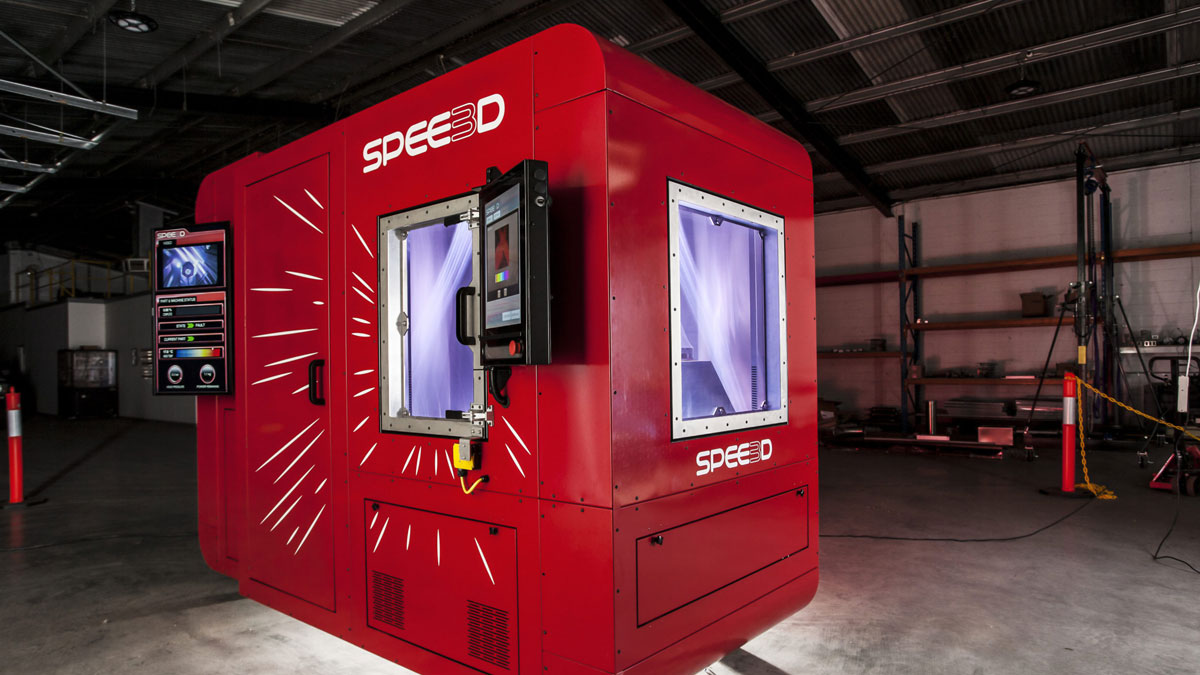SPEE3D
Machine vision for Industry 4.0 high-speed printing

Research partner
University of Technology Sydney
Total Project Value (AUD)
$1,312,342
IMCRC Funding (AUD)
$349,763
Start date
01/03/2017
Duration
1.4 years
Melbourne-based manufacturer SPEE3D was established by two engineers with an ambitious mission: to make it easier to manufacture high-quality, cost-effective industrial metal parts.
SPEE3D had the metal additive manufacturing technology to support its vision, with the ability the create metal parts in just minutes. However, to compete with traditional sand-casting techniques, there was an opportunity to further improve its existing process and address complex manufacturing problems. The manufacturer looked to R&D to do so, partnering with IMCRC and Rapido at the University of Technology Sydney (UTS) on a one and half year, $1.3 million project in 2017.
This research partnership aimed to develop 3D scanning technology to monitor the manufacture of metal parts during and after printing, improving speed, quality and accuracy.
SPEE3D and UTS Rapido were ultimately successful, and the outcomes of their research led them to invest in another project with IMCRC. Commencing in 2019, the project sought to further upscale the technology and expand its application to automate and digitalise the repair and replacement process of metal parts.
“As a start-up, we knew we had to tap into the research ecosystem to access the skills and resources we didn’t have in-house. By partnering with IMCRC and UTS Rapido, we have been able to develop something we wouldn’t have been able to do on our own,” said Byron Kennedy, Co-founder and CEO, SPEE3D.
“We’re now moving to commercialise the technology, testing it with customers and assessing the demand across various sectors including defence and automotive. And there’s no doubt we will invest in some follow-on projects as well.
“Our work with IMCRC and UTS has also supported SPEE3D’s expansion. In five years, we have grown from two employees in Melbourne to 60 employees spread across offices in four countries.”
Byron credited the success of the projects to IMCRC’s business model, as it enabled commercial companies and academia to effectively work together and negotiate intellectual property ownership.
Hervé Harvard, Founding Executive Director of UTS Rapido, UTS’ advanced R&D engineering and technology consultancy, echoed Byron’s sentiments.
“With IMCRC’s support, we established something more than just a simple transaction or project collaboration. We built a trusting and respectful relationship with SPEE3D, and the projects serve to demonstrate how UTS Rapido can help our partners with their R&D and innovation strategies,” he said.
Stuart Warren, Principal Delivery Manager at UTS Rapido and the driving force behind both projects, attributed their success to the in-person interactions between UTS Rapido and SPEE3D.
“Having one-on-one time with the engineering team at SPEE3D built invaluable relationships and enabled us to problem solve more easily,” he said.
“IMCRC was cognisant of these benefits and facilitated additional travel to Charles Darwin University to test programming on installed operational machines. As a result, we have concluded the project with software that’s fully integrated into SPEE3D’s system. We can’t thank IMCRC more. The team has been phenomenally supportive.”

As a start-up, we knew we had to tap into the research ecosystem to access the skills and resources we didn’t have in-house. By partnering with IMCRC and UTS Rapido, we have been able to develop something we wouldn’t have been able to do on our own.
Byron Kennedy
Co-Founder and CEO, SPEE3D

